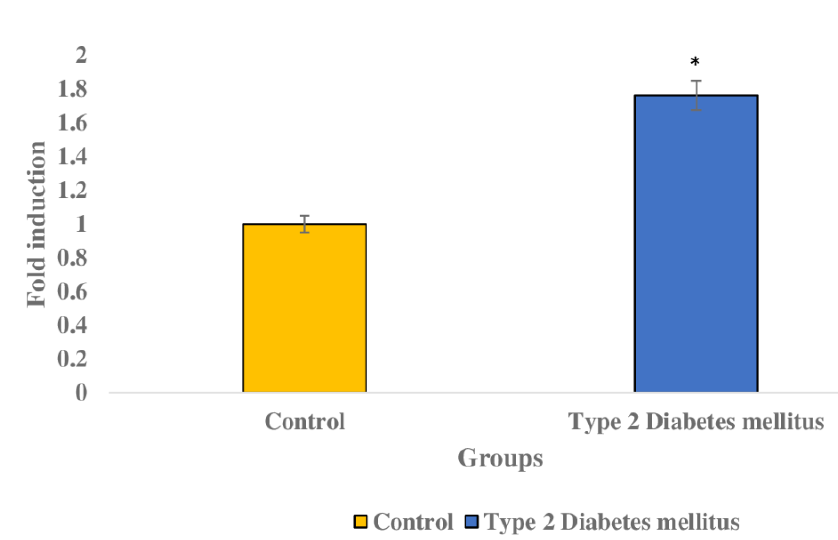microRNA-9-5p and its target nuclear factor kappa B are differentially expressed in type-2 diabetes patients
DOI:
https://doi.org/10.15419/bmrat.v11i2.863Keywords:
Type 2 diabetes mellitus, microRNA-9-5p, Nuclear Factor Kappa B, Gene expression, Insilico, Good health, Well-beingAbstract
Background: According to various studies, type II diabetes (T2D), a serious metabolic disease marked by insulin resistance with disrupted glucose homeostasis, affects millions of people worldwide and may reach 552 million cases by 2030. Recent studies highlighted the key role of microRNAs (miRNAs) in various cellular processes related to disease development. Moreover, studies have indicated increased concentrations of miR-9-5p in T2D individuals, thereby suggesting a possible role for miR-9-5p in influencing the regulation of glucose metabolism. Hence, the current study aims to focus on miR-9-5p and its target nuclear factor kappa B (NFkB1) in T2D by utilizing publicly available genome sequences to point out their potential as diagnostic and therapeutic biomarkers.
Methods: Twenty blood samples from ten T2D patients and ten healthy patients were taken for this investigation and stored for further analysis. This work identified miR-9-5p as a possible T2D Mellitus (T2DM) candidate by utilizing bioinformatic tools like the NCBI database, BLAST, miRbase, RNAfold, and TargetScan. Additionally, the secondary structure of miR-9-5p was constructed using RNAfold, and Ct and melt curves were used to statistically evaluate the miR-9-5p levels. The investigation also looks into the gene expression of nuclear factor kappa B (NFkB1).
Results: hsamiR- 9-5p's lowest free energy was found to be -40.20 kcal after thoroughly examining its secondary structure, suggesting its possible relevance in T2D regulation. The results indicate that T2D patients have dysregulated miR-9-5p and NFkB1 expression levels. The observed upregulation of NFkB1 and downregulation of miR-9-5p indicate the potential roles of these molecules in the onset of T2D.
Conclusion: According to our findings, miR-9-5p may be a valuable target for T2DM treatment and a diagnostic and predictive tool. Understanding miR-9-5p's function and its target gene NFkB1 may shed light on the molecular causes of T2D, paving the way for innovative therapies. Further research is imperative to fully comprehend the functional consequences of miR-9-5p dysregulation and its impact on NFkB1-mediated pathways in T2D.

Published
Issue
Section
License
Copyright The Author(s) 2017. This article is published with open access by BioMedPress. This article is distributed under the terms of the Creative Commons Attribution License (CC-BY 4.0) which permits any use, distribution, and reproduction in any medium, provided the original author(s) and the source are credited.
